Since November 8, 2012, a ban on apple snails of the genus Pomacea has been in effect in the EU, because one of the species has been found to be a pest in rice plantations in Portugal. Since then, apple snails may not be passed on (not even given away!) even if they are offspring from the EU. Before this trade and import ban, apple snails – almost exclusively the species Pomacea diffusa – were popular pets, which were bred in many color varieties. All species of the genus Pomacea originate from South America, but since the 1970s they have been bred for food in many tropical regions of the world, especially in Asia. Animals that escaped from breeding farms or were deliberately released have long since gotten out of control and are considered an invasive pest in many places.




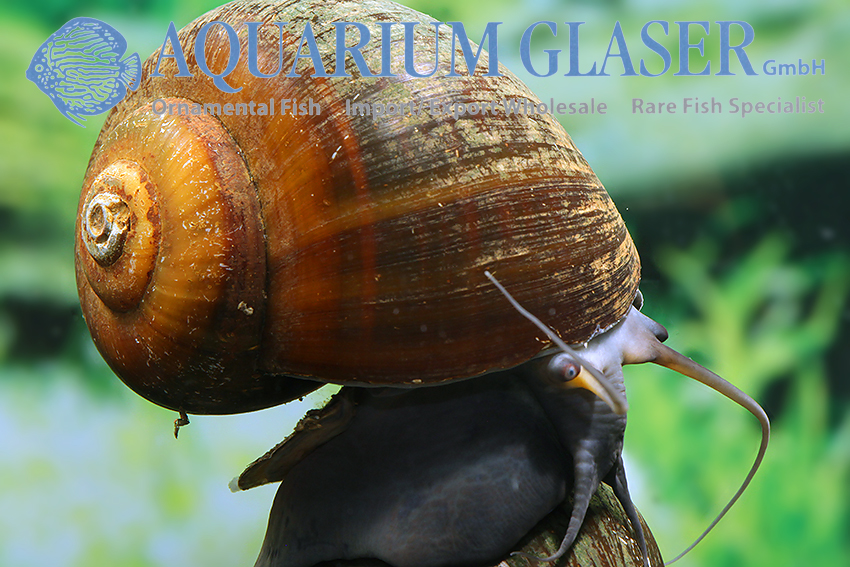
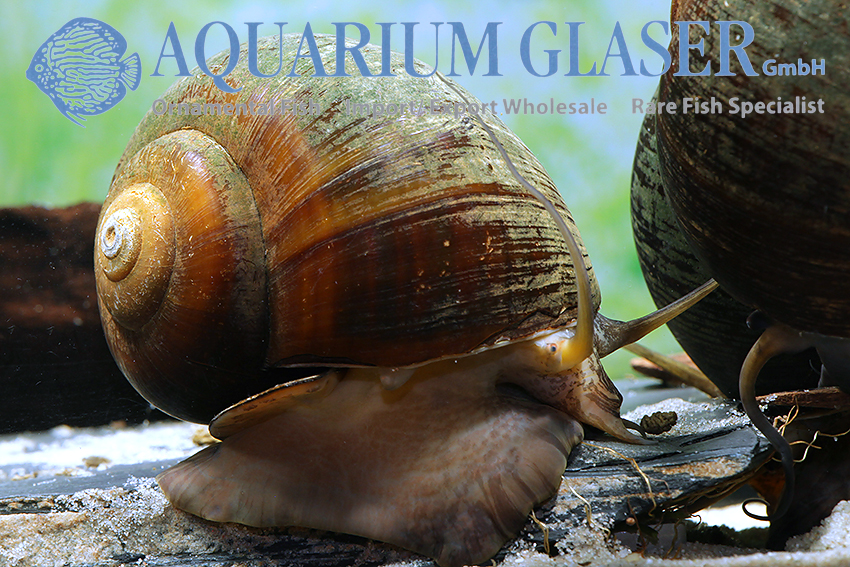
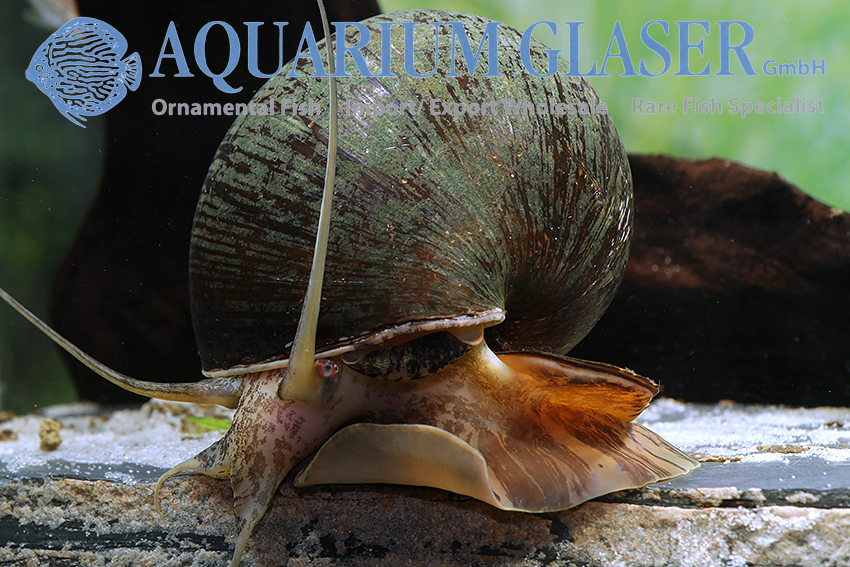
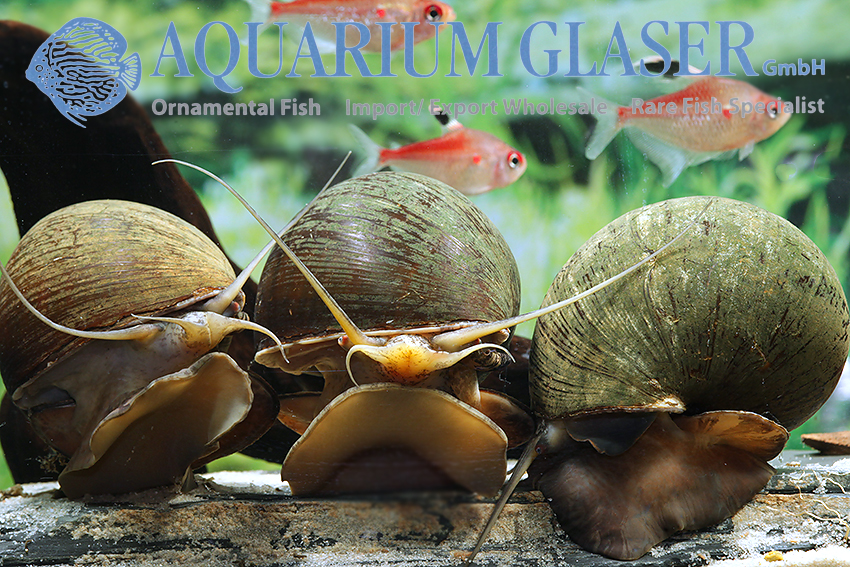
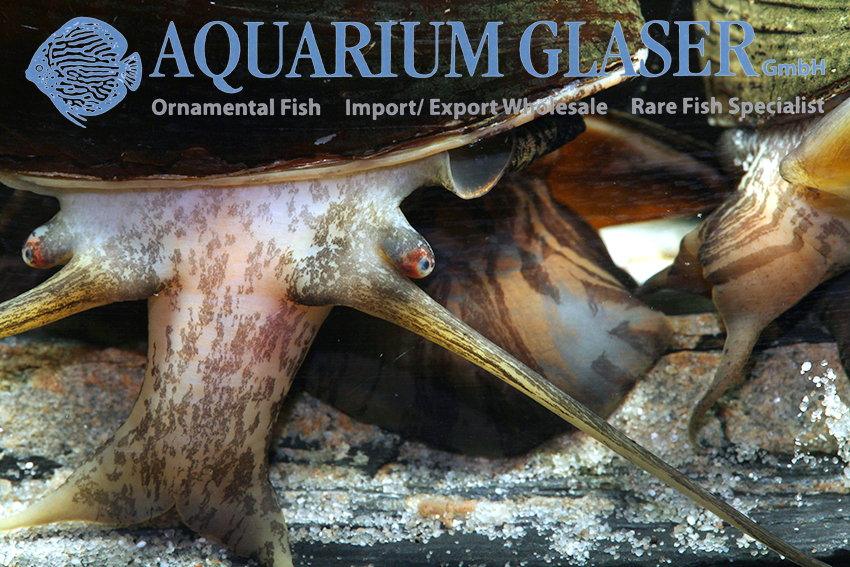
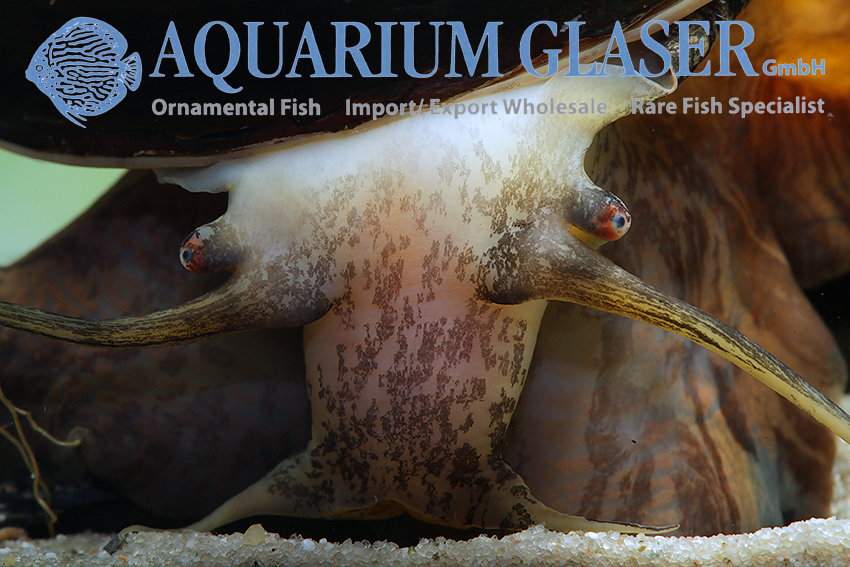
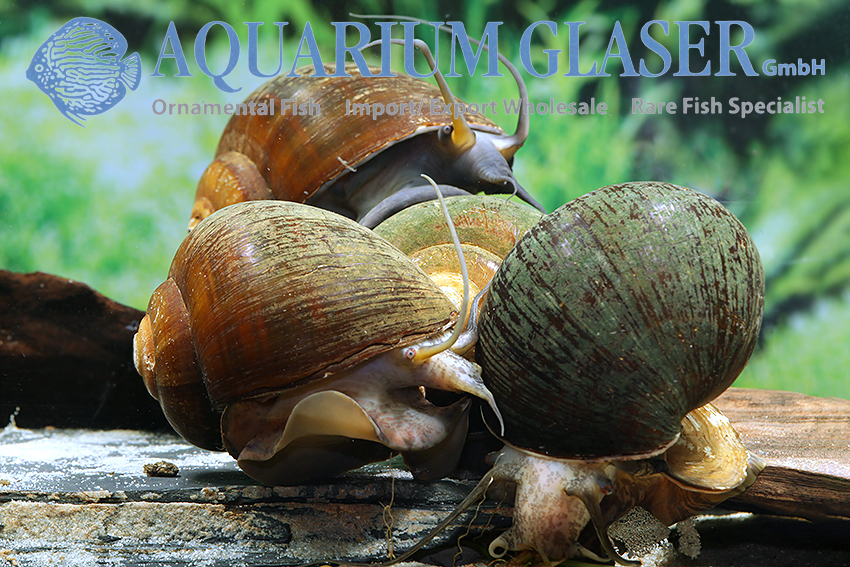
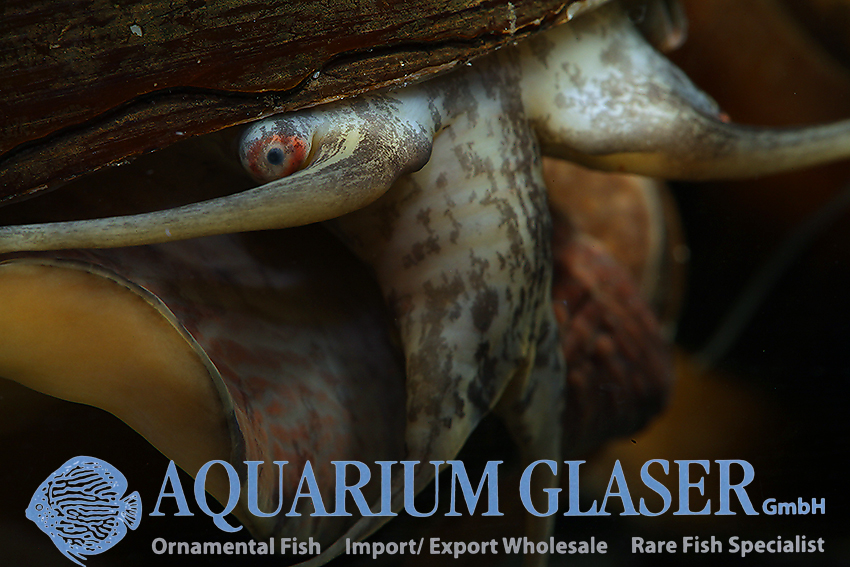
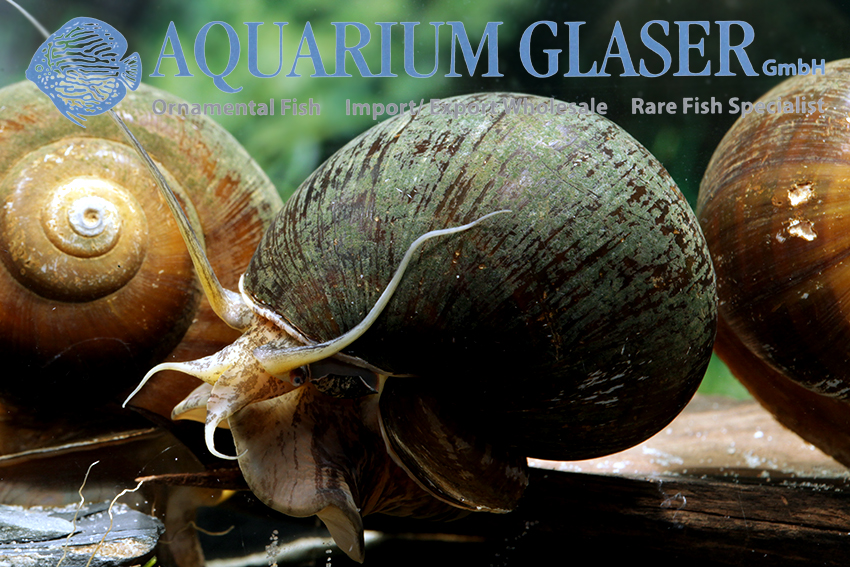
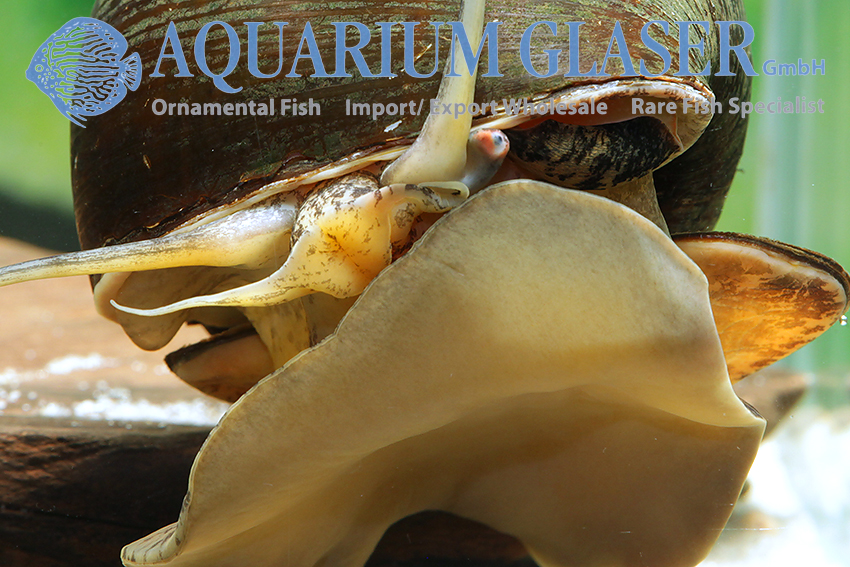
The vacuum created in the hobby has been filled for some years by the Asian apple snail Pila ampullacea. It too is a popular food animal in Southeast Asia, but is apparently increasingly being displaced by introduced South American Pomacea. As an importer, you have to be careful not to accidentally get the much more common Pomacea from Asia, or you will be in trouble with the authorities. The simplest distinguishing feature of the two genera is the condition of the lid (= operculum). In all South American species (Pomacea) the operculum is horny and easily bendable, comparable to a fingernail, while in the Pila species (there are also several species) it is hard and calcareous and cannot be bent. Since this can only be determined with difficulties on living animals, at least we limit ourselves since 2012 to the import of large specimens from 6 cm shell diameter, which can be easily identified.
Nobody would think of keeping large apple snails in a planted aquarium. In any case, attacks of snails on living plants are always possible. However, it has been shown that Pila ampullacea in particular is very fond of frozen food (for ornamental fish), i.e. meaty food, and usually does little damage to plants. It is very important for the care that fishy co-inhabitants do not constantly pluck the long antennae of the animals. Since Pila ampullacea likes to burrow into the ground, a sufficiently high substrate should be provided. Like all apple snails, Pila are also separately sexual, so there are males and females. Sex differences are not known. The spawn is laid outside the water and includes 20-50 eggs.
Usually the soft body of Pila ampullacea is deep black in color. From time to time, however, yellow-green, mackerel or white-patched animals can be found. Because these very rare deviant colored animals of course attract our attention, we have many pictures of them. But this should not hide the fact that 99% of the Pila ampullacea are pure black.
All apple snails are lung breathers and must come to the water surface to breathe. Therefore, your aquarium must not be filled to just to the top, or the animals will drown!
For our customers: Pila ampullacea in size 6-8 cm have code number 486023 on our stock list. Please note that we supply only wholesale.
Text & photos: Frank Schäfer




